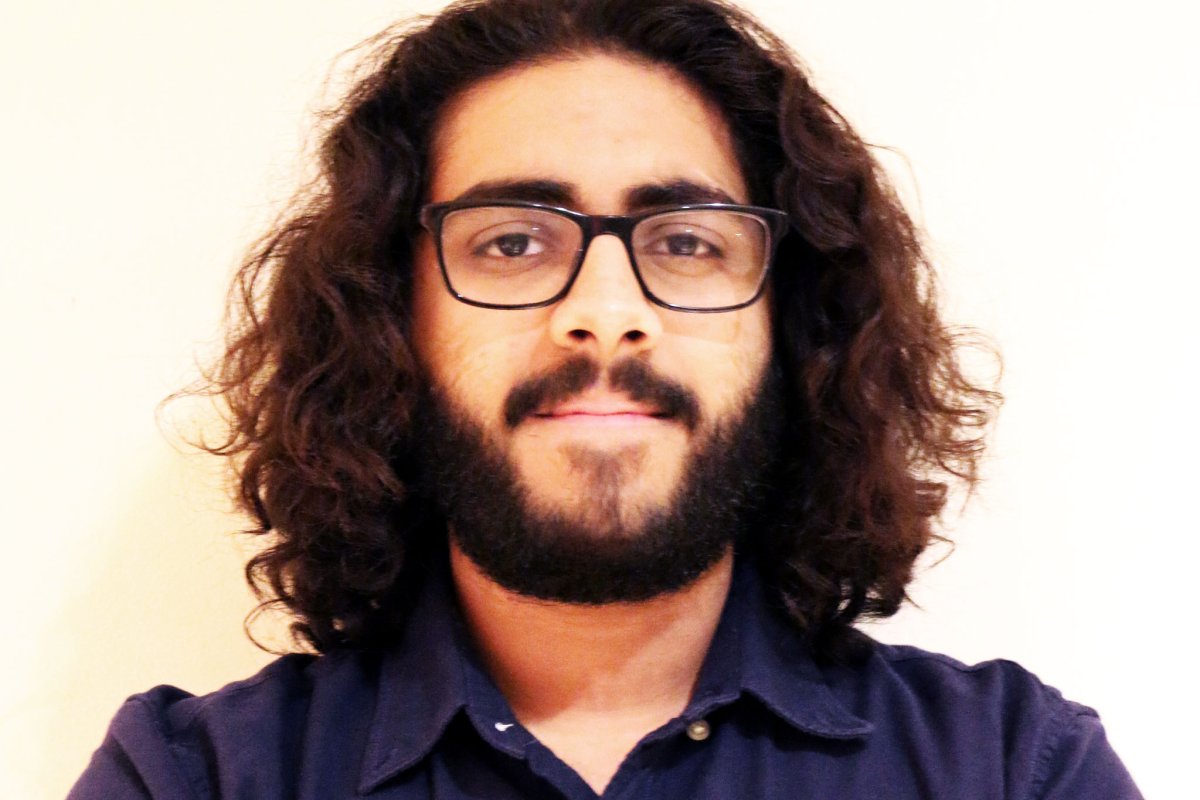CSE student named Goldwater Scholar

Three CSE students also receive honorable mention
MINNEAPOLIS/ST. PAUL (04/11/2017) — Rahul Parhi, a University of Minnesota junior majoring in math and computer science, has been named a 2017 Goldwater Scholar by the Barry Goldwater Scholarship and Excellence in Education Foundation.
The prestigious, competitive scholarship is awarded annually to outstanding sophomores and juniors who intend to pursue research-oriented careers in mathematics, the natural sciences, and engineering. The scholarship awards up to $7,500 per year for two years of undergraduate study. This year 240 scholars were selected nationwide from a field of 1,286 students who were nominated by their colleges and universities.
Three other juniors in the University's College of Science and Engineering and College of Biological Sciences received honorable mention. They are physics and math majors Kendra Bergstedt and Ryan Schmitz and chemistry/biochemistry major Merrick Pierson Smela.
All four students are enrolled in the University Honors Program.
Goldwater scholar
Rahul Parhi of Maple Grove, Minn., plans to complete a Ph.D. in computer science or applied mathematics with an emphasis on quantum computing and machine learning. A participant in the University of Minnesota Talented Youth Mathematics Program, he began working on the problem of fault tolerant arithmetic circuits while in high school with Professor Chris Kim. His development of partial triple modular redundancy to achieve high fault tolerance won him recognition as a finalist in the Intel International Science and Engineering Fair and as a Seagate Rising Star. As an undergraduate, Parhi has worked with Professor Nick Hopper to develop a private presence protocol to provide secure digital messaging. And he is creating more efficient rank aggregation algorithms for sorting data with Professor Soheil Mohajer. His research has been supported by two Undergraduate Research Opportunities (UROP) grants and has been published in the 2015 IEEE International Symposium on Circuits and Systems.
Honorable mention
Kendra Bergstedt, a physics and mathematics major from Roseville, Minn., a plans to complete a Ph.D. in physics and conduct research in space physics with an emphasis in instrumentation. She has been involved in a variety of research projects, including the synthesis of semiconductor nanocrystals with Professor Uwe Kortshagen, the measurement of anisotropic magnetoresistance of Heusler alloys with Professor Paul Crowell, simulating the motion of ions in the earth’s magnetosphere with Professor Cynthia Cattell, and building a CubeSat to detect X-Rays emitted by the sun with Professors Lindsay Glesener and Demoz Gebre Egziabher. In addition, she spent a summer at the University of Toledo studying properties of tin ions using the Heavy Ion Accelerator. Bergstedt is a National Merit Scholar, a Christofferson Scholar, and the flute section leader in the Pride of Minnesota Marching Band.
Ryan Schmitz, a physics and mathematics major from Rogers, Minn., plans to complete a Ph.D. in particle physics and study dark matter, neutrino oscillations, and supersymmetric particles. As an eighth grader, he completed a science fair project on the temperature dependence of a magnetic linear accelerator and became fascinated by the possibilities of mathematically describing physical systems. At the University of Minnesota, Schmitz began working with Professor Paul Crowell to assess characteristics of gallium arsenide and magnetic domain walls as potential materials for digital data storage. He has also worked in the lab of Professor Vlad Pribiag on superconductivity and 2D topological insulators, and with Professor Priscilla Cushman to develop a neutron veto that will allow accurate detection of Weakly Interacting Massive Particles (WIMPs). Schmitz is a National Merit Scholar, a Presidential Scholar, and a Blair Scholar, and his research has been supported by a Basford Scholarship from the School of Physics and Astronomy. In addition to his academic interests, he plays hockey in the intramural league and trombone in the Pride of Minnesota Marching Band.
Merrick Pierson Smela, a chemistry and biochemistry major from Minneapolis, Minn., plans to complete a Ph.D. in chemical biology and conduct research in metabolomics and metabolic engineering. He has taken math and chemistry courses at the University of Minnesota since his junior year in high school, and he began doing research with Professor Nikolaos Papanikolopoulos in the Center for Distributed Robotics at the same time. Since then, he has worked with Professor Thomas Hoye on dibenzofuran-based fluorophores and with Peter Intile on the effects of silver nanoparticles, which are released into aquatic ecosystems through wastewater, on the intestinal microbiome of zebrafish. Smela’s research has been supported by a Heisig-Gleysteen Fellowship at the University of Minnesota, and he will be an Amgen Fellow at Harvard this summer. He is a National Merit Scholar, Bentson Scholar, and winner of the J. Lewis Maynard Prize from the Chemistry Department. He is active in the American Chemical Society student chapter and Alpha Sigma Chi, where he coordinates chemistry outreach.
The Barry M. Goldwater Scholarship and Excellence in Education Program was established by Congress in 1986 to honor Sen. Barry Goldwater, who served his country for 56 years as a soldier and statesman, including 30 years of service in the U. S. Senate. Since the inception of the program, 62 undergraduates at the University of Minnesota-Twin Cities have been named Goldwater Scholars.
University of Minnesota, Twin Cities students who are interested in applying for the scholarship in the future should visit the Office of National and International Scholarships website or contact Timothy Jones at natschol@umn.edu.
For more information on the Goldwater Scholarship, visit the Goldwater Scholarship website.
